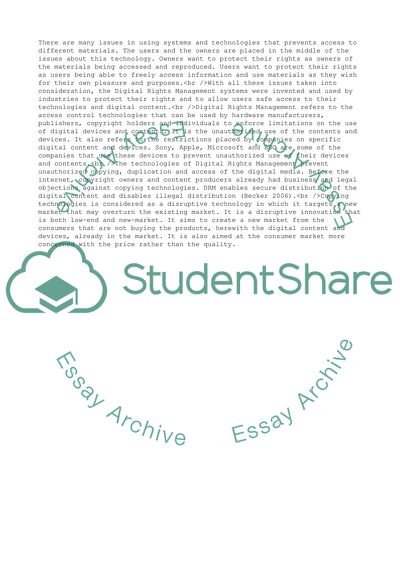Cite this document
(Digital Rights Management Research Paper Example | Topics and Well Written Essays - 1500 words, n.d.)
Digital Rights Management Research Paper Example | Topics and Well Written Essays - 1500 words. https://studentshare.org/management/1724487-digital-rights-management-drm-research-paper
Digital Rights Management Research Paper Example | Topics and Well Written Essays - 1500 words. https://studentshare.org/management/1724487-digital-rights-management-drm-research-paper
(Digital Rights Management Research Paper Example | Topics and Well Written Essays - 1500 Words)
Digital Rights Management Research Paper Example | Topics and Well Written Essays - 1500 Words. https://studentshare.org/management/1724487-digital-rights-management-drm-research-paper.
Digital Rights Management Research Paper Example | Topics and Well Written Essays - 1500 Words. https://studentshare.org/management/1724487-digital-rights-management-drm-research-paper.
“Digital Rights Management Research Paper Example | Topics and Well Written Essays - 1500 Words”. https://studentshare.org/management/1724487-digital-rights-management-drm-research-paper.


